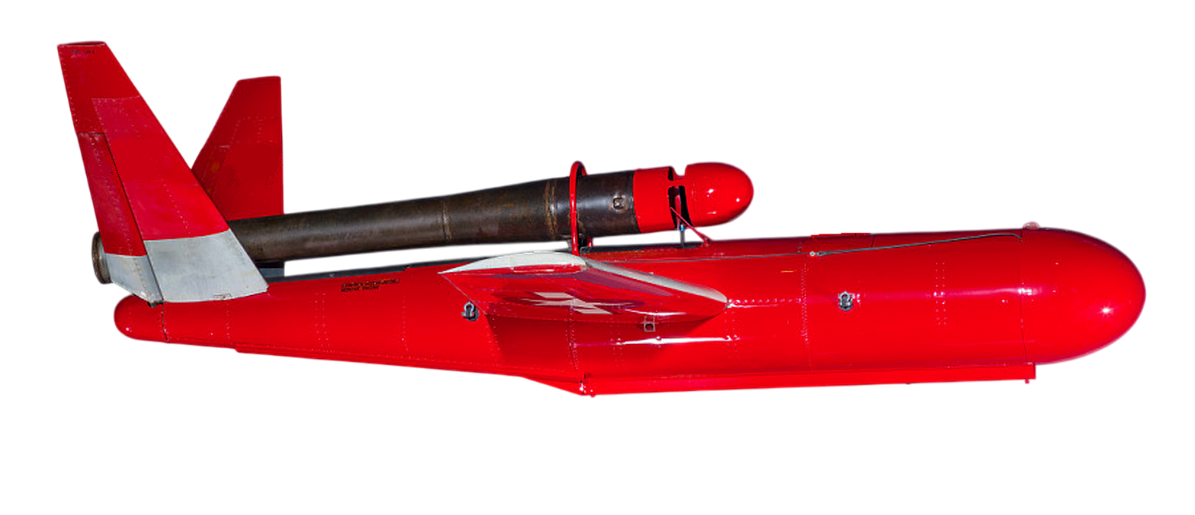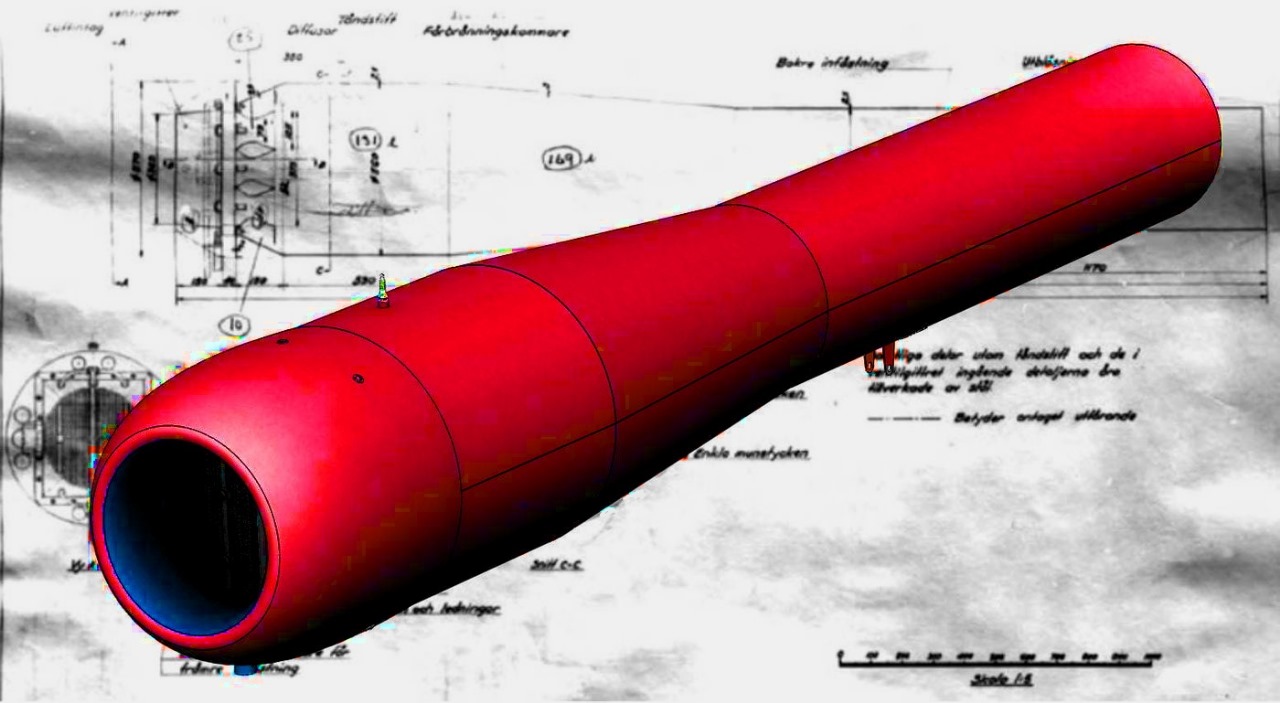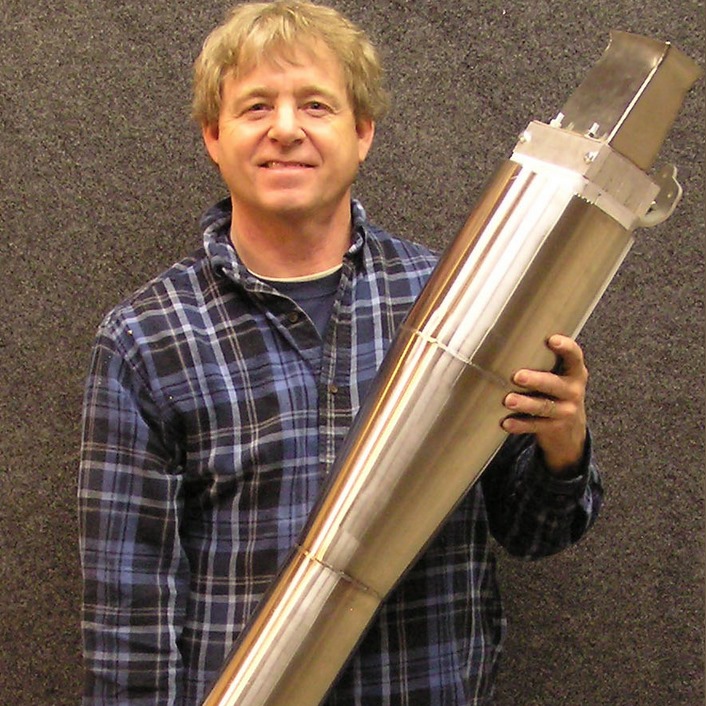
We are glad to welcome you to our website! Since you have come here, it means that you are interested or at least not indifferent to the topic of pulsejets.
Pulsejet engine?
Can it really be simulated too?
As it is known, the pulsejet engine was widely used during World War II. In 1943, thanks to the efforts of the German engineer Paul Schmidt and the Argus Company, the classic valve pulsejet engine Argus-014 with a thrust of 3000 N was created and launched into mass production as a cruise engine for the Fieseler-103 cruise missile (V-1). The simplicity and low cost of this engine, as well as the missile itself, allowed tens of thousands of units to be produced and made this complex one of the most effective types of weapons created in Germany.
The success of the combat use of the V-1 cruise missiles determined the significant interest of the allies in this type of weapon. After World War II, considerable efforts were directed at reproducing the V-1 complex, and then at improving cruise missiles with a pulsejet engine, mainly in the USA and the USSR. The work in the USSR came to practically nothing, and although quite interesting improved models were created, the results of this work perished in the fog of traditional Soviet secrecy. On the contrary, in the USA, serial models were created, which remained in service with the Navy for quite a long time, and were then used as air targets. Later, a significant number of research works on this engine were declassified and are now freely available. These are fundamental works on the subject of pulsejets, they can be downloaded from our website on the "Library" page.
It is characteristic that during the performance of all this work, not only the advantages of the pulsejet engine were noted - extreme simplicity and cheapness due to the absence of rotating and reciprocating parts, but also serious disadvantages. In particular, the pulsejet engine is characterized by excessive noise, which gives away the aircraft, and significant vibrations transmitted from the engine to the aircraft structure. In addition, extremely high wall temperatures are noted, which prevent the engine from being placed inside the aircraft fuselage, significant fuel consumption, which limits the range and duration of the flight, as well as a limited service life of the intake valves due to the complex impact and temperature effects.
Due to the above features and disadvantages, the pulsejet engine turned out to be in demand for solving a very limited range of problems, in particular, only for attack UAVs or missils of relatively short range (up to several hundred kilometers) and for air targets. And it was these disadvantages that turned out to be a virtually insurmountable obstacle to the further development and distribution of pulsejets in aviation.

However, all these disadvantages turned out to be insignificant for aircraft modeling. Therefore, starting in the 50s of the last century, enthusiasts of aircraft modeling technology created a large number of different designs of pulsejets for aircraft modeling. At the same time, given the fact that the valve mechanism is a weak point of the classic valved-type pulsejet engine; a large number of works were also aimed at creating designs of a valveless pulsejets.
Unfortunately, in the vast majority of cases, all these efforts were not crowned with noticeable success, although some more or less successful examples of small-scale designs of valveless pulsejets are known. In general, it can be noted that interest in the pulsejet engine has arisen periodically over the past 80 years, in waves, which led to a revival and then a fading of interest in it. At the same time, today some signs indicate that the topic of pulsejets has not been forgotten, and we are again now on a certain rise, although perhaps not too long, as in past years. Nevertheless, issues of research into pulsejets may again be on the agenda.
In this situation, design, and especially creation of new models of aviation equipment should start not with cutting steel sheets and certainly not with welding pipes from them, but with theoretical models that allow calculating the parameters and altitude-speed characteristics. And here we immediately encounter a new problem - for the same 80 years, no theoretical models and programs for calculating a pulsejet engine suitable for practical use have been created. That is, some models were developed, and even in large quantities, but not so much for design tasks, as for individual scientists to solve their own problems. Mainly - to write scientific articles, satisfy their own ambitions and / or some other not entirely clear goals. But certainly not so that these models could be used by everyone who wants to design new engines.
In such conditions, the creation of a working model of the working cycle of a pulsejet engine and a corresponding program for its modeling, accessible to a wide range of specialists, became the goal of our work and the creation of this site. In fact, you can see the first experience of such a program and even try to simulate the working cycle of some real engine. For advanced professional users, we can already offer advanced program functions, including parametric modeling. In any case, our work has just begun and is still far from complete, so inaccuracies and even errors are possible when working with the program. Nevertheless, we hope to eventually bring what we have started to a good level of reliability and will gratefully accept any comments as help from our users.
Т Е Р М І Н О В І Н О В И Н И
October, 06, 2025
Another pulse jet engine calculation parameter has been added to the PULSEJET-SIM program!

Read more >>>
October 1, 2025
A new engine has been added to the standard engine library!

Read more >>>
July 8, 2025
A new software service for matching the characteristics of pulsejet engine with UAV has been created!

Read more >>>
March 10, 2025
Access to version 1.0 of the PULSEJET-SIM program developed for modeling the parameters and characteristics of pulse jet engine is already open!

Read more >>>
Attention to scientists-developers of mathematical models! We accept orders for online programs development for modeling various devices, engines and systems! A sample program is presented on our website! If you are interested and have working models, please contact us!
